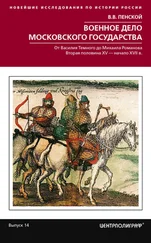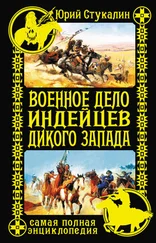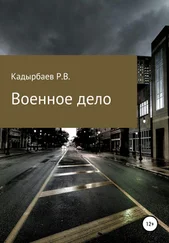Tausend K. Hunnische Poliorketik// GB. Bd. 12/13. 1985/ 1986.
Thompson E. A. The Camp of Attila// JHS. Vol, LXV В (1945). 1947.
Thompson E. A. A History of Attila and the Huns. Oxford, 1948.
Thompson E. A. The Early Germans. Oxford, 1965.
Thompson E. A. The Huns / Revised and with an afterword by P. Heather. Oxford; Maiden, 1999.
Werner J. Beitrage zur Archaologie des Atula-Reiches. MUnchen, 1956.
Wirth G., Attila und Byzanz: Zur Deutung einer fragwtlrdi-gen Priscusstelle //BZ. Bd. 60.1967.
Wolfram H. L'armée romaine comme modèle pour l'Exercitus Barbarorum // L'armée romaine et les Barbares du IIIе au VIIe siècle. Conde-sur-Noireau, 1993.
Zygulski Z. (Jr.). The Wagon Laager // FAH. Fasc. VII. 1994.
СПИСОК БИБЛИОГРАФИЧЕСКИХ СОКРАЩЕНИИ
ДА — Древности Алтая: Известия лаборатории археологии. Горно-Алтайск
ЗВОРАО — Записки Восточного отделения Российского археологического общества. СПб
НС — Новая серия
СА — Советская археология. М
СЭ — Советская этнография. М.
ТИИАЭ АН КазССР — Труды института истории, археологии и этнографии Академии наук Казахской ССР. Алма-Ата
AArchASH — Acta Archaeologica Academiae Scientiarum
Hungaricae, Budapest BZ — Byzantinische Zeitschrift. Munchen
CSEL — Corpus scriptomm ecclesiasticorum Latinorum.
Vindobonae OOP — Dumbarton Oaks Papers. Washington
EA nt — Eurasia Antiqua. Berlin; Mainz
FAH — Fasciculi Archaeologiae Historicae. Lódź
FHG — Fragmenta historicorum Graecomm/ Collegit, disposuit, nous et prolegomenis illustravit
C. Mullerus. Parisiis GB — Grazer Beitrage. Graz; Horn
HGM — Historici Graeci minores/ Ed, L. Dindorfius. Lipsiae
JAS — Journal of Asian Studies. Ann Arbor
JHS — The Journal of Hellenic Studies. London
MGHAA — Monumenta Germaniae historica, Auctores antiquissimi. Berolini
MMJ — Metropolitan Museum Journal, New York
MS — Monumenta Serica. Peking
OrE — Oriens Extremus. Wiesbaden
PG — Patrologiae cursus completus: Patrologia Graeca / Accurante J.-P. Migne. Parisiis
PL — Patrologiae cursus completus; Patrologia Latina / Accurante J.-P. Migne. Parisiis
PPr — Past and Present. Oxford
RN — Revue Numismatique. Paris
SEAA — Silk Road Art and Archaeology. Kamakura
Stlr — Studia lranica. Paris
* * *
SUMMARY
THE «WHISTLING ARROWS» OF MO-TUN AND THE «MARS SWORD» OF ATTILA: ART OF WARFARE OF THE ASIATIC HSIUNG-NU AND THE EUROPEAN HUNS
by Valery P. Nikonorov and Julij S. Khudjakov
The present book has to do with the art of warfare and wars of the Hsiung-nu and the Huns — those nomadic peoples, which ranked among the most militant in the World history. The Hsiung-nu created in the late 3rd century B.C. within the vast steppe area of Central Asia a powerful state that became for several centuries the main enemy of Han China and subdued numerous nomadic tribes living in the vast expanses from the Great Chinese wall to the boundless Siberian taiga. This was due, first, to those peculiar achievements, which the Hsiung-nu contributed to the field of mounted warfare. Although many ancient eastern peoples employed battling on horseback with shooting arrows, the Hsiung-nu were the first who developed horse-archery into the best form. They invented fighting mainly at a long distance, when the outcome of battle was decided not in hand-to-hand-combat, but in methodical and very efficient shooting at the enemy from a distance, i. e. with the least losses for themselves. The appearance of these tactics became possible only because of the making of the big and powerful compound bow in the eastern part of the Central Asian steppe zone during the last centuries B.C. Such bows helped Hsiung-nu warriors to strike any enemies by their famous «whistling» arrows at a long distance, while they remained invulnerable themselves to a considerable extent. The Hsiung-nu warfare influenced very much their nomadic neighbours, as well as the Chinese.
The Huns, who invaded Europe in the last third of the 4th century A.D. and whose main body seems to have been related to the Hsiung-nu by origin, mherited all of the latter's' principal achievements in the sphere of martial art and techniques. The Hun army consisted of light-armed mounted contingents, equipped with a big powerful bow as the principal weapon, as well as with swords (sometimes each rider could have a double set of bladed arms — a long two-edged sword and a short one-edged broadsword) and a lasso. In tactics, they gave preference to fighting at a long distance with keeping permanent high mobility and manoeuvrability. Because of the tactical reasons, any heavy armour did not spread in the bulk of Hun troops, except for some of the noble warriors who wore costly metal helmets and corselets, doing so rather under Roman inspiration. The rest, rank-and-file men, had curved fur-caps serving them as protectors, as well as not so big round shields made from wood and leather. The Hun cavalry always charged first, riding in loose order, and could use in the course of action various stratagems (feigned retreat, encircling an enemy order, laying ambushes).
Strategy of the Huns was grounded on the factor of surprise, which was achieved at the expense of their extraordinary speed of riding. As a rule, their raids were well planned with the obligatory employment of intelligence information. During their invasions, the Huns aimed at penetrating into the hostile territory as deep as possible.
Owing to their superiority in the long-distance weapons and tactics, the Huns had defeated the Alano-Sarmatian and Eastern Germanic peoples and turned within the late 4th century to 450s into the mightiest power of Southeastern and Central Europe. However» it should be noted that the Hun tactical methods became quite different under the great king Attila. It was caused by those changes, which occurred in the army of the Huns themselves who began to rely not only upon cavalry but also upon infantry recruited from the midst of subdued Eastern Germanic tribes such as the Ostrogoths, the Gepids, the Scyri, and others. These infantry forces were very needful, especially for siege operations, fighting in forests and mountains, etc. Nevertheless, the transition to the wide employment of soldiers on foot marked a decline of the Hun military power. In the open battle on the Cata-launian Fields in 451, when large masses of infantry played a significant role and cavalry was hardly able to make the entire volume of their favourite tactical stratagems (ambushes, simulated retreat, encirlement), the Huns lost their previous advantage before the foes. True, contrary to R. P. Lindner's theory, which is widely accepted at present, it seems that there are no sufficient proofs to state that Attila's properly Hun soldiers were transformed in a considerable degree from cavalrymen into combatants on foot.
Closer towards the end of their history the European Huns entirely digressed from the practice of long-term conquests. Having strongly taken possession of so important horse-breeding regions of Southeastern Europe as the Northern Pontic area and the Danube valley, including the Great Hungarian Plain, Attila was no longer aiming at the capture of new territories. His last large-scale campaigns, against Gaul (451) and Italy (452) — i. e. the countries providing no sufficient natural resources to support very numerous mounted hordes of Huns during any long time — were intended to get the plunder, as well as to receive in the future the big tribute from the western Romans to be defeated (like the Huns took from the Byzantines). However, these campaigns of Attila were not successful and, therefore, his plans proved to be unrealizable.
Читать дальше
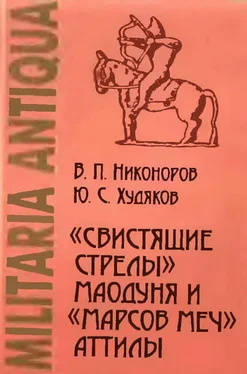



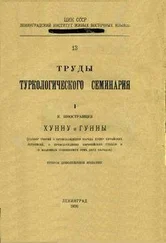


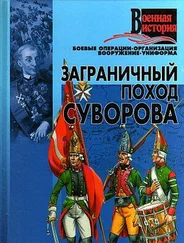

![Автор неизвестен Военное дело - Осада и штурмъ Текинской крепости Геокъ-тепе (съ двумя планами) [старая орфография]](/books/404209/avtor-neizvesten-voennoe-delo-osada-i-shturm-tekinskoj-kreposti-geok-tepe-s-dvumya-planami-staraya-orfografiya-thumb.webp)
